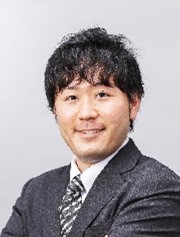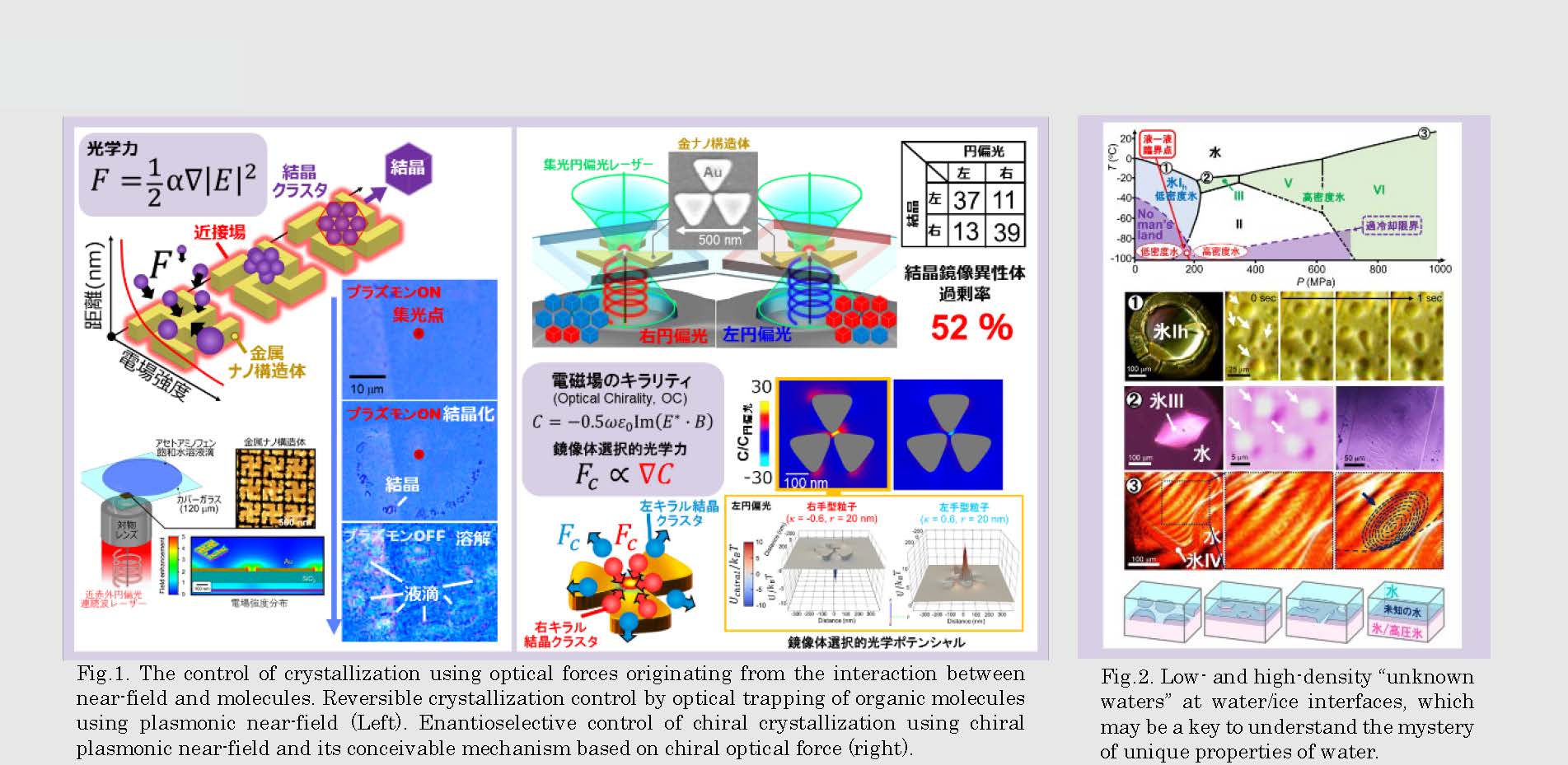IMRAM
Institute of Multidisciplinary Research for Advanced Materials, Tohoku University
東北大学
多元物質科学研究所

LAST UPDATE 2022/09/07
-
研究者氏名
Researcher Name新家寛正 Hiromasa NIINOMI
助教 Assistant professor -
所属
Professional Affiliation東北大学多元物質科学研究所
光機能材料化学研究分野
Institute of Multidisciplinary Research for Advanced Materials, Tohoku University
Division of Photo-Functional Materials Chemistry -
研究キーワード
Research Keywordsキラリティ
近接場
結晶成長
液体多形
水
Chirality
Near-field
Crystal Growth
Liquid Polymorph
Water
- 研究テーマ
Research Subject -
ナノ構造体の近接場を駆使した自己組織化の制御と物性計測技術の開発
Control and measurement of molecular self-assembly using near-field of nanostructures
研究の背景 Background
金属や誘電体ナノ構造体への光照射によって励振される局在型表面プラズモン共鳴やMie共鳴により生じる近接場はナノスケールに閉じ込められた光であり、物質との相互作用により従来の光科学の主役であった空間を伝搬する遠方場とは異なる新奇な光学現象を誘起することが知られています。近接場と物質の相互作用の特性を駆使することで、新たな物質制御法や物性測定法が生まれることが期待されています。
Light irradiation to metallic or dielectric nanostructures generates near-field locally confined in nano space via the excitation of localized surface plasmon resonance or Mie resonance. Near-field is known to induce unprecedented optical phenomena beyond the frameworks of the light-matter interaction in far-field radiation through its interaction with a matter. The unique interaction between near-field and matter is expected to lead us unprecedented method to control and measure materials and their physical properties.
研究の目標 Outcome
近接場と物質との相互作用を駆使することで、結晶化をはじめとした分子自己組織化の自在制御と遠方場では困難な物質物性測定の実現を目指しています。特に、キラルな近接場とキラル物質との間の相互作用で生じる左右非対称な力学的相互作用(光学力)を駆使したキラル自己組織化の制御に取り組んでいます。また、高圧状態における氷と水の界面に生じる“未知の水”の物性や局所構造の決定にも取り組んでいます。
The objective of my research is to realize the control of molecular self-assembly including crystallization and the measurement of physical properties that cannot be determined by conventional far-field by using near-field. Especially, we pursue the possibility of enantioselective chiral self-assembly by imposing enantioselective chiral optical force originating from the interaction between chiral near-field and chiral matter. Also, we aim to measure the physical properties of “unknown waters”, which appears at ice/water interface, by using near-field.
研究図Research Figure

Fig.2. Low- and high-density “unknown waters” at water/ice interfaces, which may be a key to understand the mystery of unique properties of water.
文献 / Publications
CrystEngComm 18, 7441 (2016). Cryst. Growth Des. 19, 529 (2019). J. Phys. Chem. Lett. 11, 4422 (2020).
J. Phys. Chem. C 125, 6209 (2021). J. Phys. Chem. Lett. 11, 6779 (2020). J. Phys. Chem. Lett. 13, 4251 (2022).
研究者HP
- hiromasa.niinomi.b2
 tohoku.ac.jp
tohoku.ac.jp - http://www2.tagen.tohoku.ac.jp/lab/nakagawa/